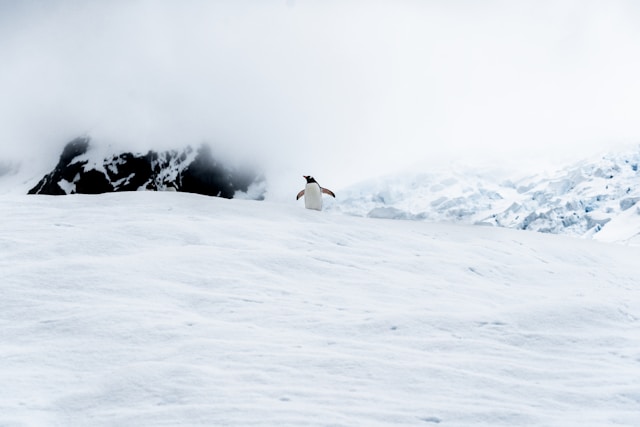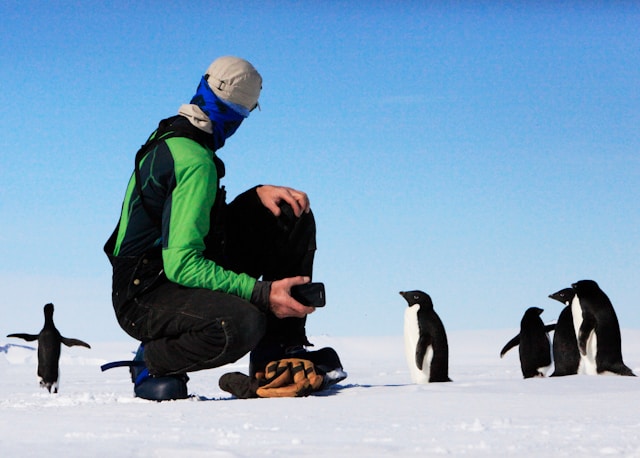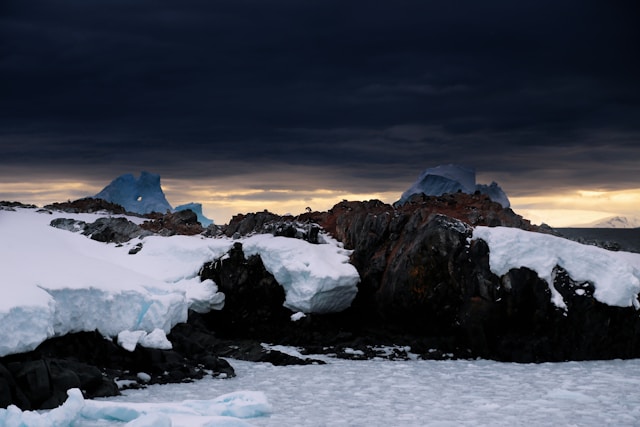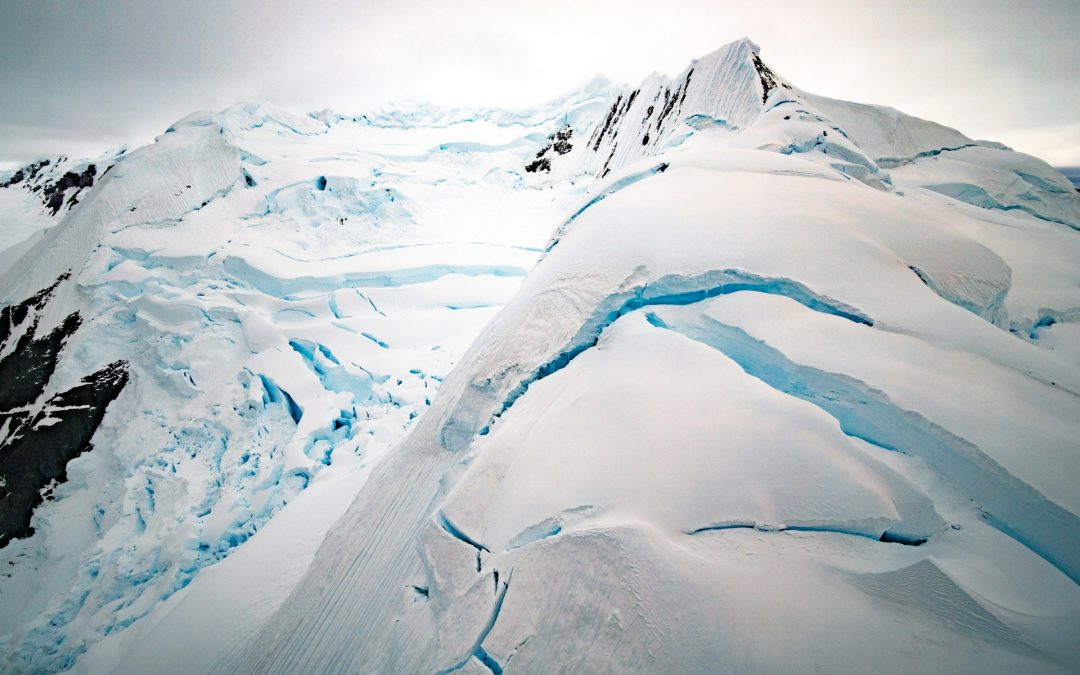The world’s largest desert is the Antarctic Desert. While many people commonly associate deserts with hot, sandy environments, a desert is technically defined as any large, arid region that receives very little precipitation—typically less than 250 millimeters (10 inches) per year. With that definition, Antarctica qualifies as the largest desert on the planet.
Physical Characteristics of the Largest Desert in the World: The Antarctic Desert
- Area: The Antarctic Desert covers approximately 14 million square kilometers (5.4 million square miles), making it the largest desert on Earth.
- Precipitation: It receives only about 20 millimeters (0.8 inches) of precipitation yearly, primarily in the form of snow.
- Ice Coverage: About 98% of the continent is covered by ice, which averages over 1.9 kilometers (1.2 miles) in thickness.

A penguin is right at home in the largest desert in the world
Location:
- Geography: Located at the southernmost part of Earth, it is centered around the South Pole and surrounded by the Southern Ocean.
- Isolation: Antarctica is the most isolated continent, with the closest landmasses being South America, Africa, and Australia.
Climate:
- Temperature: It is the coldest, windiest, and driest continent. Temperatures can plummet to as low as -80°C (-112°F) in the interior during winter, with coastal regions being comparatively milder.
- Seasons: Antarctica experiences long, dark winters and brief, intensely sunny summers due to its polar location.
Ecosystem and Wildlife:
- Biodiversity: Despite the harsh conditions, Antarctica supports a unique array of wildlife, primarily in its surrounding waters. Key species include penguins, seals, and a variety of seabirds.
- Marine Life: The Southern Ocean is rich in krill and serves as a crucial feeding ground for whales and other marine life.
Human Presence and Research:
- Research Stations: Numerous countries operate research stations on the continent, focusing on studies related to climate, glaciology, and marine biology. The Antarctic Treaty System regulates these activities, promoting peaceful scientific collaboration.
- No Permanent Residents: There are no native human inhabitants; the human presence is limited to researchers and scientists.

A researcher making friends with penguins in Antarctica
Environmental and Scientific Significance:
- Climate Research: Antarctica plays a critical role in global climate systems and provides invaluable data for understanding past and future climate changes through ice core studies.
- Ice Melt and Sea Level: Changes to the Antarctic ice sheet have significant implications for global sea levels.
Fun Facts About The World’s Largest Desert:
- Midnight Sun and Polar Night: Parts of Antarctica experience continuous daylight during summer months and complete darkness during the winter, known as the Midnight Sun and Polar Night, respectively.
- Largest Iceberg: Some of the largest icebergs in the world calve from Antarctic ice shelves; Iceberg B-15, which broke off in 2000, was the largest ever recorded.

Antartica changes dramatically at night
Conservation:
- Protected Areas: International agreements aim to protect the fragile Antarctic environment, regulating tourism and fishing to preserve its pristine condition.
- Challenges: Climate change poses threats to the Antarctic ice sheets, affecting global weather patterns and ecosystems.
Antarctica, as the world’s largest desert, offers a stark and stunning landscape that is crucial to our understanding of climate dynamics and ecological resilience. Its unique ecosystem and the scientific research conducted there make it an extraordinary frontier of human exploration and environmental stewardship.

